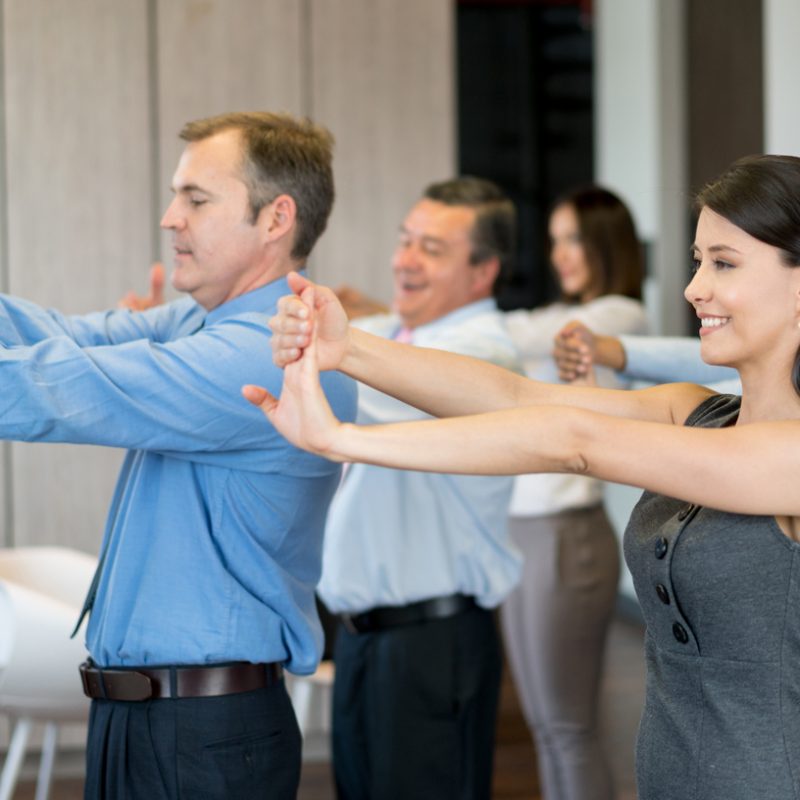
What separates high performers from their peers in today’s cognitively demanding and always-on world? It’s not just talent or intelligence; it’s their ability to effectively manage time, energy, and attention on a daily basis. This is where the concept of the “corporate athlete” becomes more than just a metaphor—it transforms into a model for sustainable performance.
Having transitioned from elite professional sports in the English Premiership—yes, I lived the Ted Lasso lifestyle before it became popular—into the realms of executive coaching and corporate wellness, I have had a front-row seat to observe what truly distinguishes elite performers from the rest. Here’s what I’ve learned: the most successful professionals treat themselves like athletes.
They recover like athletes. They train like athletes. They think like athletes.
Moreover, they often partner with fitness professionals—especially personal trainers—who help them stay accountable to the physical practices that enhance their professional performance.
Beyond Busyness: Energy as a Competitive Advantage
In the now-classic Harvard Business Review piece, “The Making of a Corporate Athlete,” Loehr and Schwartz (2001) argued that sustained high performance in the business world relies on the same foundational practices as elite sports: periodized training, deliberate recovery, mental focus, and alignment with a sense of purpose. In short, these professionals understand that their body is not a luxury—it’s a lever.
Resistance training, in particular, plays an outsized role. Why? Because it builds physical capacity while enhancing cognitive endurance. It improves executive function by strengthening key neurological and metabolic pathways that are depleted by constant decision-making, stress, and information overload (Raisio et al., 2021).
I’ve seen this firsthand: executives who prioritize resistance training are not only stronger, but they are also sharper, more resilient, and better leaders. Interestingly, they aren’t always the most talented individuals in the room; rather, they are the ones who consistently show up for themselves.
Muscle-Centric Thinking in High-Stakes Environments
Professionals who train like athletes cultivate an energy reserve that their counterparts often lack. As Raisio et al. (2021) found, physically active executives experience improvements not just in physical health but in affective (emotional) regulation, cognitive sharpness, and even social engagement. In fact, strength training was described by one executive as “a reset for the brain,” providing clarity during high-pressure workweeks and unlocking creative problem-solving capacity.
When you train the body, you train the brain. And that’s a message personal trainers must lean into—especially those looking to attract high-net-worth clients.
This isn’t about vanity or chasing six-packs. It’s about building metabolic resilience and psychological endurance. These are the intangible assets that allow professionals to recover faster from setbacks, make better decisions, and sustain peak performance longer. It’s why a well-programmed strength routine should be considered executive armor.
What This Means for Personal Trainers
For personal trainers looking to work with executives and corporate leaders, this presents a golden opportunity.
- First, you’re not just selling sessions—you’re providing a performance solution. Resistance training becomes a strategic investment in career performance and stress resilience.
- Second, if you help your clients achieve higher energy, better focus, and physical robustness, you position yourself as an indispensable asset—not just a fitness provider.
- Third, consistency and accountability are key. Executives need structure, results, and a partner who can adapt to their fluctuating demands. The more you can personalize and professionalize the experience, the more likely you are to create long-term, high-value relationships.
In fact, many of the top-performing individuals I coach also become vocal advocates for their trainers, creating referral pipelines into executive networks and C-suites.
Final Thoughts: Train the Human Engine
In my experience, the highest performers—whether on the pitch or in the boardroom—understand one thing better than anyone else: your physical body is the engine of everything else. When it breaks down, so does your clarity, your confidence, and your capacity to lead.
So if you’re a personal trainer reading this, let me challenge you: stop selling workouts. Start selling outcomes. Start positioning resistance training as the gateway to clarity, longevity, and elite performance. Teach your clients to treat themselves like athletes—and watch their careers (and your business) take off.
Because in today’s economy, energy is the currency. And muscle is the bank.
References
Loehr, J., & Schwartz, T. (2001, January 1). The making of a corporate athlete. Harvard Business Review. https://hbr.org/2001/01/the-making-of-a-corporate-athlete
Raisio, H., Kuorikoski, T., Rantala, T., & Rask, M. (2021). “After all, no one is superhuman here”: An analysis of the perceived effects of managerial athleticism. Administrative Sciences, 11(4), 123.






